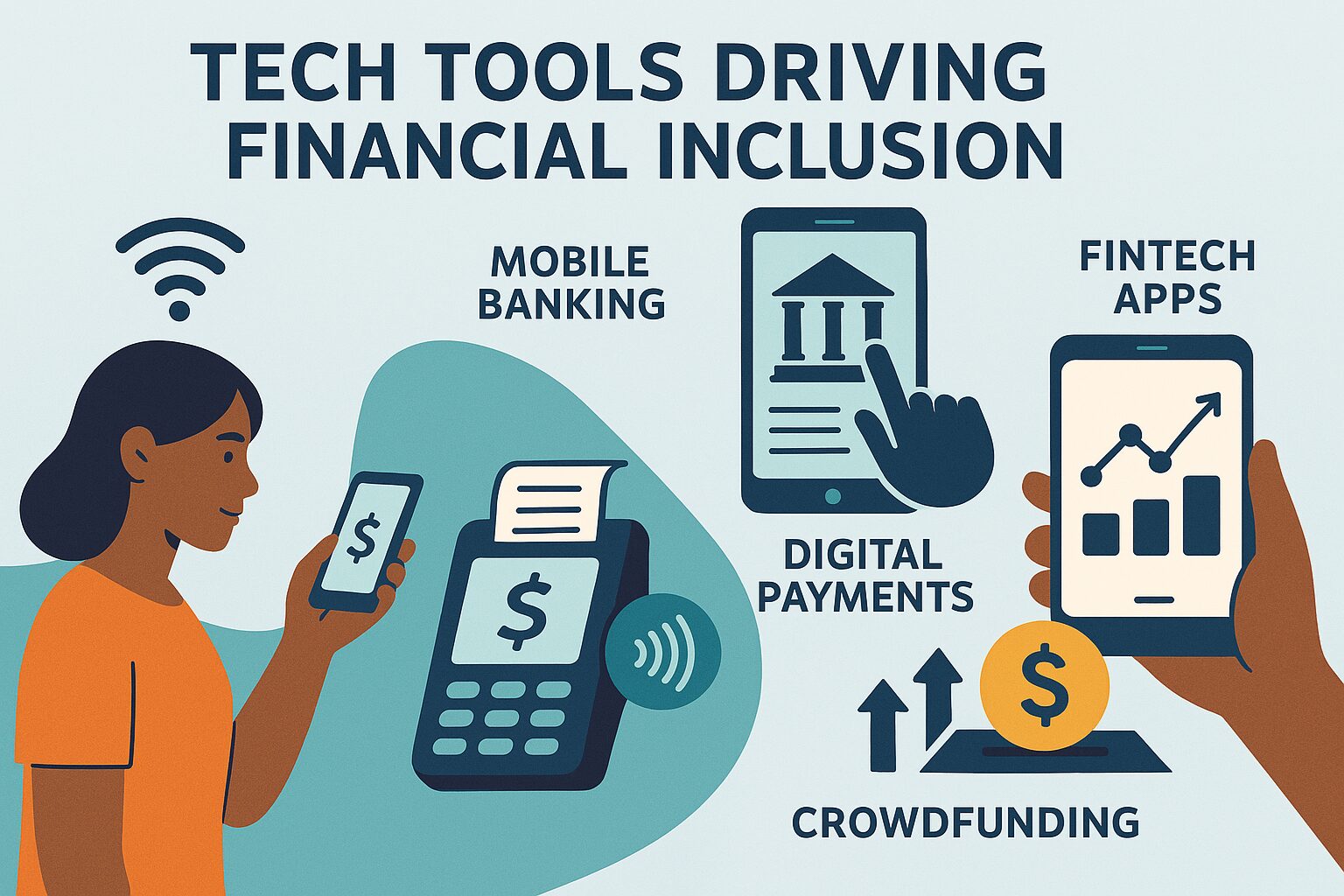Financial inclusion is necessary to empower individuals and businesses in underserved communities. It provides access to services like savings accounts, loans, and insurance, crucial for economic growth and reducing inequality. With the help of technology such as AI lending, financial inclusion can be expanded, allowing people previously excluded from the financial system to access essential services. These advancements have helped drive significant changes, improving personal and community-wide economic well-being.
Technology has played a pivotal role in this shift. Innovations such as mobile banking, blockchain, and artificial intelligence (AI) have made financial services more accessible and affordable. These tools have opened new doors for those who face barriers to traditional banking, such as geographic location, limited access to physical banks, or lack of credit history. This is why financial inclusion remains a key priority for driving sustainable development.
The growth of mobile banking apps is a critical trend in advancing financial inclusion. These platforms are accessible to people in even the most remote areas where traditional bank branches are scarce. With a smartphone and an internet connection, people can manage their finances, pay bills, and send money across borders. These apps reduce the cost of financial services, making them affordable for low-income users.
1. Mobile Banking Apps
Mobile banking apps have revolutionized the financial services industry, especially for those without access to traditional banking. These apps allow users to perform various banking tasks such as transferring funds, checking balances, and applying for loans. Mobile banking continues to be a primary driver of financial inclusion as more people access smartphones.
One significant benefit of mobile banking is its ability to provide instant access to funds. This is especially important for people living in areas lacking banking infrastructure. With mobile banking, users can receive money, make payments, and access financial services anytime. It also helps bridge the gap between urban and rural populations, offering financial services that were once out of reach.
What’s more, mobile banking apps are designed to be user-friendly, even for those unfamiliar with traditional banking practices. The apps typically offer intuitive interfaces, making them easy to navigate for anyone regardless of their financial literacy. These features have contributed to the rapid adoption of mobile banking in both developed and developing countries.
2. Blockchain & Cryptocurrencies
Blockchain technology and cryptocurrencies have become powerful tools for promoting financial inclusion. By providing decentralized alternatives to traditional financial systems, these technologies enable users to perform transactions without relying on intermediaries like banks. Blockchain ensures transparency and security, making it an ideal tool for people who lack trust in traditional financial institutions.
Cryptocurrencies, in particular, have gained traction as a means of offering financial services to unbanked populations. For individuals who do not have access to traditional banking, cryptocurrencies provide an alternate method for savings and payments. Cryptocurrencies also offer cross-border transfer capabilities, crucial for individuals in developing countries who rely on remittances.
In addition, blockchain can potentially improve financial services in regions with limited access to reliable banking infrastructure. Creating secure, peer-to-peer transactions eliminates the need for expensive infrastructure and intermediaries. As blockchain and cryptocurrencies continue to grow, their role in financial inclusion will likely expand, helping more people access essential services.
3. Digital Wallets
Digital wallets have become increasingly popular because they provide an easy and secure way to manage finances. These wallets allow users to store money, make payments, and transfer funds from a mobile device. By linking to credit and debit cards, digital wallets eliminate the need to carry physical cash, making transactions faster and more secure.
One significant advantage of digital wallets is their ability to support various financial activities, including bill payments, online shopping, and peer-to-peer money transfers. This versatility has made them popular for anyone seeking an all-in-one financial solution. For individuals who lack access to traditional banking, digital wallets serve as a vital tool for everyday transactions.
Moreover, digital wallets are often integrated with loyalty programs, rewards, and discounts, offering users additional value. They can be used for everything from sending money to friends to paying for groceries, making them a practical and convenient option for financial management. As digital wallets grow in popularity, they will play an increasingly important role in expanding financial inclusion.
4. AI for Credit Scoring
AI-powered lending platforms have made significant strides in reshaping how individuals are assessed for creditworthiness. Traditional credit scoring methods rely heavily on established financial histories, which can leave many people without access to loans. With an AI lending platform, lenders can analyze a broader range of data, including transaction history, spending habits, and even social behavior. This enables lenders to assess creditworthiness more accurately and fairly, especially for individuals with limited or no credit history.
AI for credit scoring is particularly valuable in regions where financial inclusion is a significant concern. It helps expand access to credit for underserved populations that might otherwise be excluded from the economic system. Using alternative data sources, AI-powered systems can evaluate risk and make more informed lending decisions, reducing bias and improving access to capital.
Additionally, AI-based credit scoring can lower lending costs for lenders and borrowers. By automating the decision-making process, AI improves efficiency. As a result, financial institutions can offer more competitive interest rates and better terms for individuals previously seen as high-risk borrowers.
5. Peer-to-Peer Lending
Peer-to-peer (P2P) lending platforms have disrupted traditional lending models by allowing individuals to lend money to others without involving banks. These platforms have made it easier for some people to access credit, particularly in regions lacking banking infrastructure. P2P lending has democratized access to finance, enabling people to obtain loans with more favorable terms than traditional financial institutions might offer.
One of the key advantages of P2P lending is its ability to cater to individuals who may not meet the strict criteria set by banks. People with limited credit histories or low credit scores can obtain loans through these platforms by directly connecting with private investors. This opens up new opportunities to access credit and build financial stability.
P2P lending also promotes financial inclusion by reducing the reliance on traditional financial institutions. With lower overhead costs and fewer barriers to entry, P2P lending platforms can offer more competitive interest rates and faster approval times. This makes borrowing more accessible for individuals and businesses in underserved markets, fostering more significant economic growth and stability.
Why These Tech Tools Matter
Financial inclusion can potentially drive significant social and economic changes. By leveraging technology, underserved populations can access the financial services they need to improve their lives. From mobile banking apps to AI-powered credit scoring, these tools break down barriers and create opportunities for people who have long been excluded from traditional financial systems.
Each of these tech tools plays a critical role in promoting financial inclusion. They help individuals save money, access credit, and make payments more securely and conveniently. As these tools evolve, their impact will only grow, empowering more people to take control of their financial futures. By embracing these technologies, the global community can move closer to a world where everyone can access the financial services they need to thrive.



































